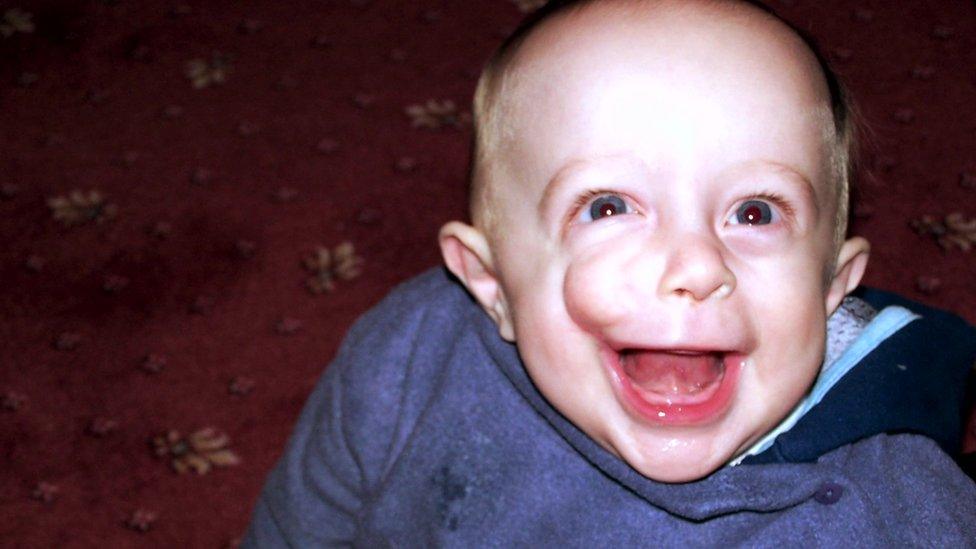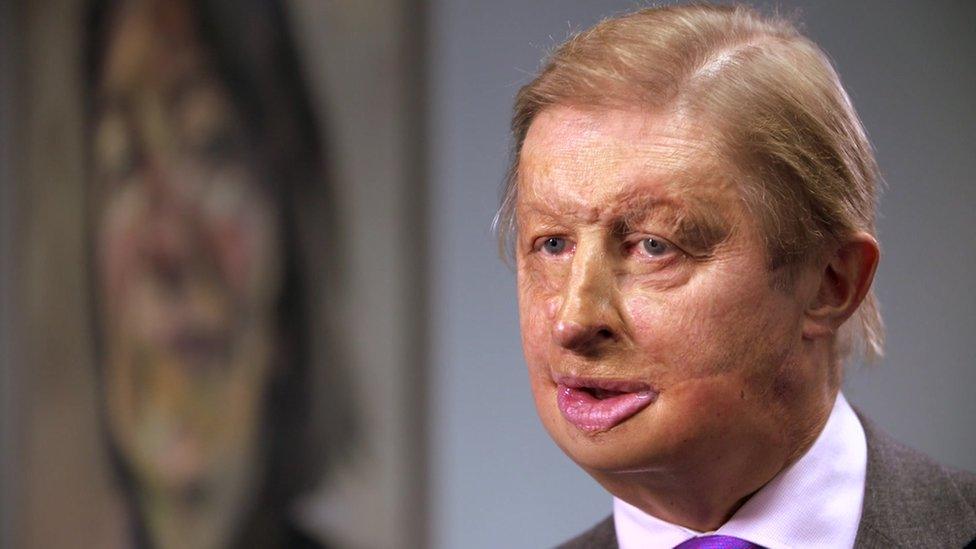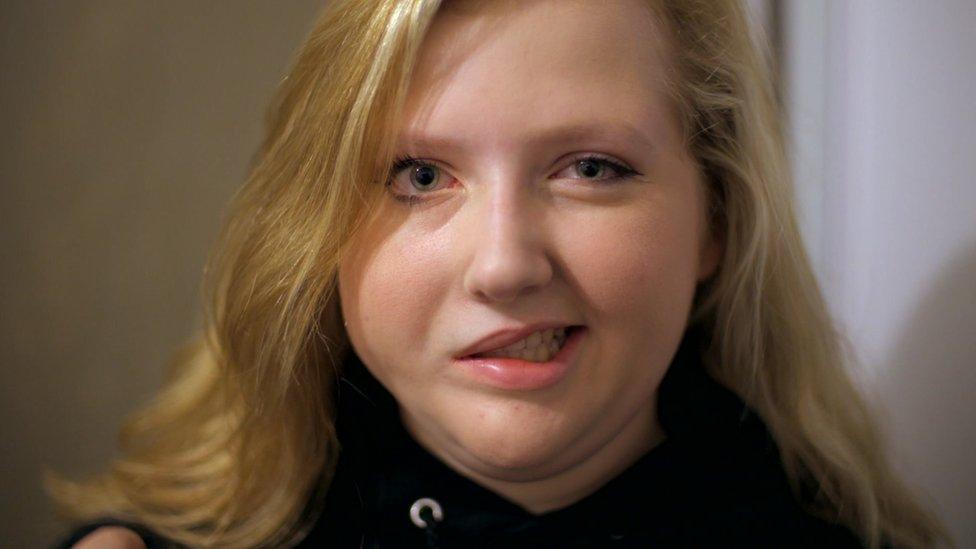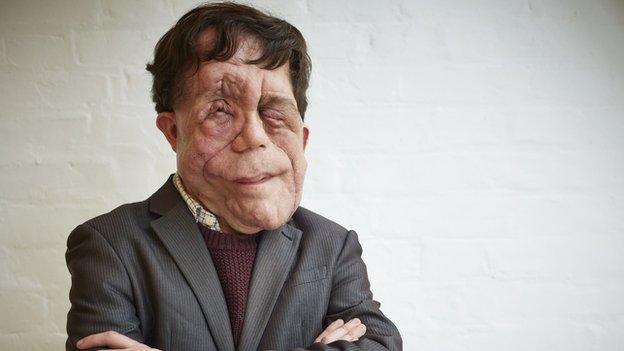The children living with facial disfigurements
- Published
Facial disfigurement: The children bullied for how they look
"I'd kill myself if I had a face like yours." The words used against Marcus, aged 10 at the time, by a fellow pupil.
Marcus was born with a cleft lip and palate and so has a gap between his lip and the roof of his mouth. It led to him being bullied at school.
"When I came home, I just burst into tears and lay on my bed," he tells the BBC's Victoria Derbyshire programme, now aged 12.
His mother, Samantha, reported the incident to the school, but says "nothing happened".

Marcus was born with a cleft lip and palate
"Something had to be done," she explains, recalling her decision to get in touch with Changing Faces, external - the UK's leading charity on facial disfiguration - which sent one of its representatives into the school to talk to the children.
Now the charity's latest campaign, called Face Equality, is working on the same principle - rolling out a programme in classrooms to try and prevent incidences of bullying and promote acceptance.
Its founder James Partridge was only 18 years old when he was severely burned in a car fire and left with a facial disfigurement.

James Partridge suffered burns in a car fire
"Every single social interaction is problematic," explains Mr Partridge.
He says the comments faced by those with facial disfigurements can be just as "painful" as those who are bullied because of their race or sexuality - but the problem is not as widely recognised.
According to a study commissioned by the charity in 2008, around 86,000 children under 16 in the UK have a psychologically and/or socially significant facial disfigurement - from birthmarks, cleft lips and palates, to scarring from accidents and burns.

Find out more
The Victoria Derbyshire programme is broadcast on weekdays between 09:00 and 11:00 on BBC Two and the BBC News Channel.

Caitlin's bullying developed gradually and began when she was seven years old.
"As I grew up and [my classmates] grew up, they all started to realise I was a bit different," she says.
"[They said] I wasn't pretty enough to be in their group and they didn't want to be friends with me because I was weird, or I looked different and didn't match them. They all just left me and isolated me because of my face."
Caitlin was only a baby when she developed a benign tumour on the side of her face.

Caitlin has facial palsy
Her mother Kim explains that during an operation, medical staff "took the whole tumour out and while doing that they caught the smiling nerve. As a result of that she [developed] facial palsy - so the whole side of her face dropped".
Although Caitlin's bullying started when she was seven, her mother has been confronting the challenges of her daughter's facial palsy from much earlier.
'I took her to her pre-school to have her photo taken and the photographer went, 'what is she doing with her face, that silly face she's pulling?'
"That was the first time I broke down. I cried my eyes out, I had to leave the room and that was the point I realised that nothing was going to be the same again."
Caitlin says she has developed more confidence over the last year, but still faces bullying online.
"On my Instagram, sometimes I get [comments like] 'oh, you're ugly' or 'you shouldn't be taking pictures like that' - so I started taking pictures of half of my face."

Children at Tetherdown Primary School took a test to see whether they viewed people with a facial disfigurement differently
As part of the Face Equality programme, Marcus and Caitlin have been invited to Tetherdown Primary School in north London, to talk about the bullying they received with a group of Year five students, aged nine and 10.
"On the first day of school, how did you feel?" one girl asks them.
"When I first went in, there were a lot of people staring… [but] you shouldn't really care - it's not you with the problem, it's the people that bully you," Marcus responds.
Prior to the day's teaching, the pupils had all taken a test that showed, on average, they were 11% slower to match a positive word to someone with a facial disfigurement than to someone without a disfigurement. On average, adults are 27% slower, the charity's research suggests.
But after meeting Marcus and Caitlin - and some additional teaching - the pupils retake the test and are only 1.5% slower.
The school's deputy head teacher, Annie Ashraf, is "gobsmacked".
"Meeting those children really made a difference, and made them see actually we're all the same," she says.
It gives hope that, through education, children with facial disfigurement can become more accepted by their peers.
Marcus just hopes that he can be judged "by my personality and what I do, not by my face".
- Published23 July 2015

- Published7 January 2016
